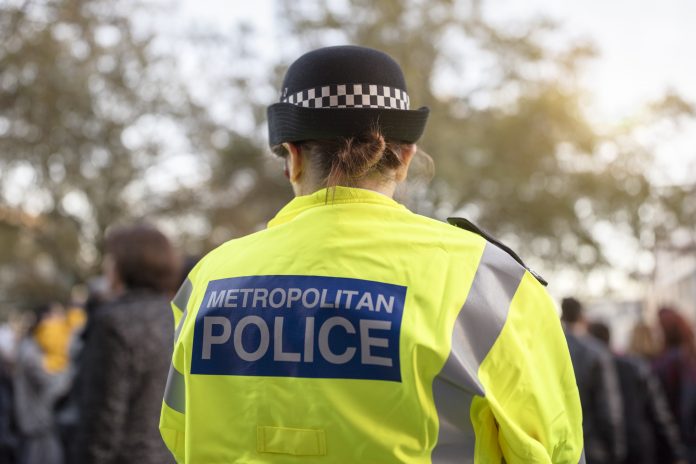Adam Mayer, Senior Manager, Qlik, discusses the impact that data analytics has had on policing and on how the Avon and Somerset Police have been at the forefront
Reflecting one year on from the outbreak of the COVID pandemic undoubtedly calls to mind how much society has relied on emergency services. From police officers and transport workers, to doctors and paramedics, key workers have had to manage the rising tide of COVID cases and their fallout, alongside routine high service demand.
Certainly, the national and regional lockdowns enforced by the UK Government to limit the virus spreading changed the remits of many public services. For the police, this meant taking on ‘public health policing’ responsibilities, implementing and upholding the government’s restrictions against indoor social contact and large events, all while monitoring and managing crime levels in the community.
Indeed, new findings for crime levels during 2020 have been disclosed by the Office of National Statistics (ONS), painting a picture of just how far lockdown impacted criminal activity last year. Around 12 million offences were recorded up to December 2020, an 8% decrease on the previous year, with the number of thefts and burglaries falling. Yet, it wasn’t just that crime “went away”, the landscape shifted with cybercrime, domestic abuse and drug offences all rising in turn.
The police were forced to pivot to protect their communities in a very different crime landscape, while managing the risk to their own officers. But how did they do it?
Turning towards data in a time of need
Freedom of Information (FOI) requests, commissioned by Qlik, revealed the critical role that data played in helping police respond to the changing situation. In fact, 80% of UK police forces used data analytics to support their response to the pandemic. There was an acceleration in the development of dedicated analytics applications, with more than half building them to support crime forecasting (63%) and to geo-map crime (58%).
The Avon and Somerset (A&S) Constabulary, which is responsible for law enforcement across Somerset, Bristol, Bath and Gloucestershire, were already actively using data prior to the pandemic. As a result, it was only natural that they turned to data analytics to understand and respond to the shift that took place largely overnight in March 2020.
Within days of the first lockdown, A&S police started developing into a number of new bespoke data analytics dashboards to inform their response to the unprecedented challenge. Using a set of dashboards to monitor breach reports and fixed penalty notices, as well as locations of enforcement activity, A&S were able to quickly understand and adapt to the new and emerging risks of policing the pandemic. It also enabled them to monitor the use of fixed penalty notices for the new lockdown rules to ensure it was consistent and fair.
Furthermore, with police officers putting themselves at a heightened risk of exposure to the virus throughout the pandemic through their interactions with the community, data was critical in helping forces respond to team changes and redistribute work. So, it was good to see many police forces used data to monitor and track the impact of COVID-19 within their own constabulary. 83% of police forces that created new analytics dashboards did so to monitor cases amongst employees, while 79% used them to identify which employees were isolating.
The untapped potential of analytics in policing
While the FOI responses demonstrated how police forces across the country actively use data and analytics to improve policing outcomes for a safer community and support their teams, they also revealed areas of opportunity where constabularies could expand their use of analytics.
For example, when it comes to making the most of data on the go, many police forces are not making data and analytics available to employees outside the station. While 88% of forces offer access to analytics on desktop computers, a much lower proportion – just over half – provide access on the go via mobile devices such as smartphones and tablets, and only 15% of forces make insights available via mobile data terminals in vehicles. This is a missed opportunity in supporting real-time decision making, which would enable police officers on the ground to take informed actions as new situations arise.
Additionally, only half of police forces are currently part of a multi-agency network that shares data for analysis with partner organisations, such as social services, fire services, hospitals, and even other police forces. Combining data for analysis enables these groups to better understand and collaborate to meet the needs of the community, which often informs preventative interventions and more positive outcomes for the community.
Finally, although most forces are using data, there is still a missed opportunity in how they are supporting police officers’ confidence in their data skills. Despite many police forces making analytics tools available to police officers (65%), detectives (69%) and community service officers (50%) to help them take more informed actions, the majority (94%) of UK police forces don’t have a data literacy programme. Improved data literacy skills empower staff at all levels to be more confident in taking informed actions based on the data that is available.
The long-arm of data in policing
Data played a critical role in helping police forces best serve their communities as the crime landscape changed during the pandemic. Now, they must consider how they can continue this agile approach to analytics as we exit lockdown, enabling a culture of informed action that will empower them to respond to any situation, as it happens, in the future.











